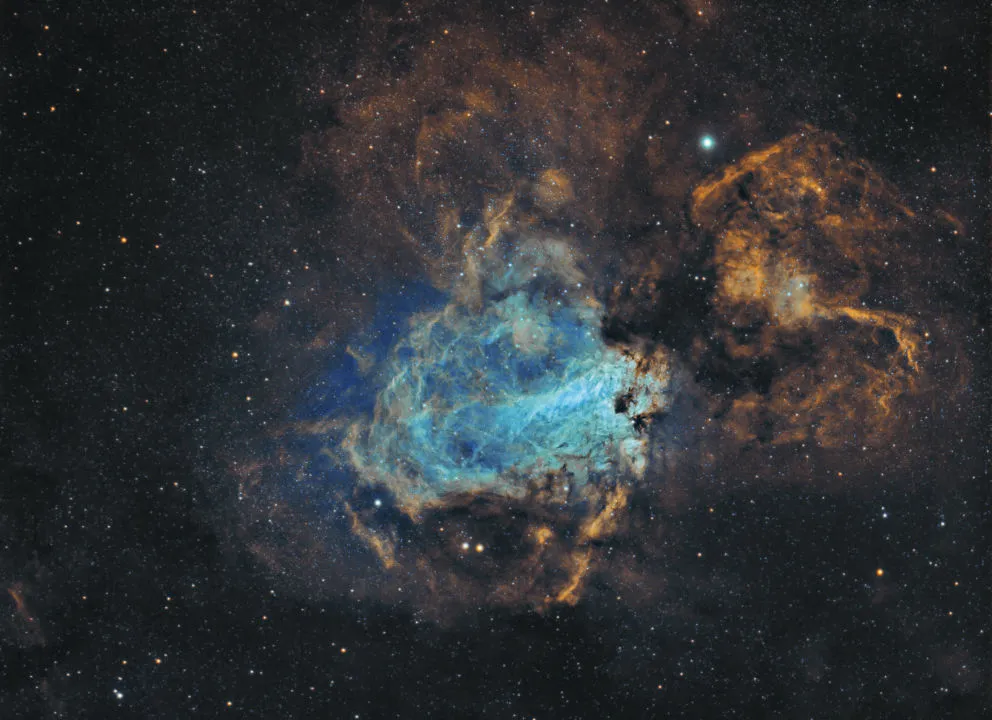Among the glories of Sagittarius, the king of the southern summer sky, M17 deserves to be better known.
Just visible to a keenly sighted naked-eye observer, the Omega Nebula (also known as the Swan or the Lobster Nebula) may lack a distinct form, but it is substantial.
Lying between 5,000 and 6,000 lightyears away, it contains more gas – fuel for star formation – than the Orion Nebula, making it one of the best laboratories we have for understanding how stars form.
More from Chris Lintott:
- Can we measure the mass of the Milky Way?
- What can young stars tell us about the Universe?
- Astronomers may have found a solo black hole wandering through space

We look to M17 to help us understand the formation of the most massive stars, those with more than eight times the mass of the Sun.
A cluster of these, formed within the last few million years, sits at the heart of the nebula and a team of astronomers using the the marvellous GRAVITY instrument attached to the Very Large Telescope have taken a closer look at them.
They used GRAVITY to get extremely high-resolution images of the nebula’s core, with the aim of identifying any companions to the massive stars that live there.
The question of whether the largest stars have companions, and what they’re like if they do exist, is thought to be important in trying to understand the process by which such massive stars form.

All star formation is a race, between the processes by which material is accreted onto the forming protostar and those that will power the nuclear fusion at the star’s core.
Once the latter get going, powerful stellar winds will prevent further accretion and growth, cutting off star formation, so any massive star needs to form quickly.
Theories of massive star formation range from the merging of smaller protostars, to interactions in dense clusters of new stars, to extreme examples of the processes that drive the formation of normal stars.
Each of these possibilities will have left its mark on the population of binary stars in M17.
Previous studies used spectroscopic techniques to try and pin down the fraction of massive stars in this young cluster that have companions, and seemed to show that the cluster was unusually devoid of such systems.

This made it an intriguing target for GRAVITY, which is capable of finding more distant and less-massive companions.
Sure enough, all six of the stars targeted in the cluster turn out to have at least one companion, sharing 14 between them, with masses ranging from three to 50 times that of the Sun.
That’s enough to conclude that, as in other clusters that have been studied, massive companions are common in M17, meaning massive binaries must form early in the evolution of such a system.
We can also say more about the binaries: there is a wide variety of separations, from stars not much further apart than Earth and the Sun, to those that are 120 times that distance apart, and a distinct lack of systems in which the two stars are of equal mass.
Unfortunately, no one theory of massive star formation explains all of these features, so all we can really say is that more observations are needed.
Luckily, with GRAVITY and the Very Large Telescope, astronomers have the tools to do the job.
Chris Lintott was reading On the origin of close massive binaries in the M17 star-forming region by E Bordier et al. Read it online at: arxiv.org/abs/2203.05036.
This article originally appeared in the May 2022 issue of BBC Sky at Night Magazine.

